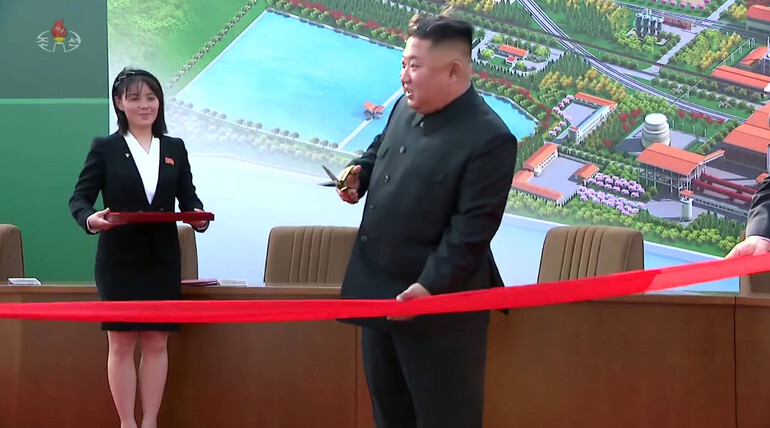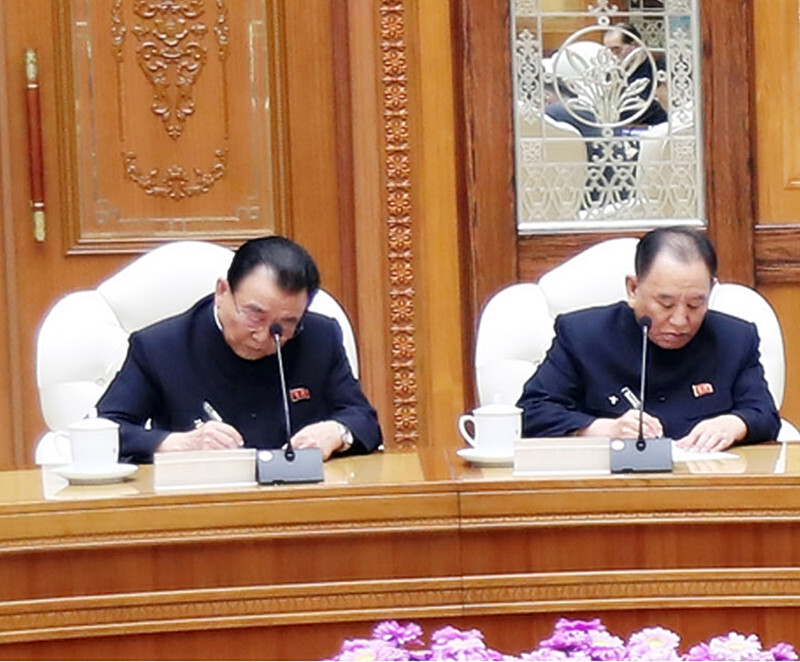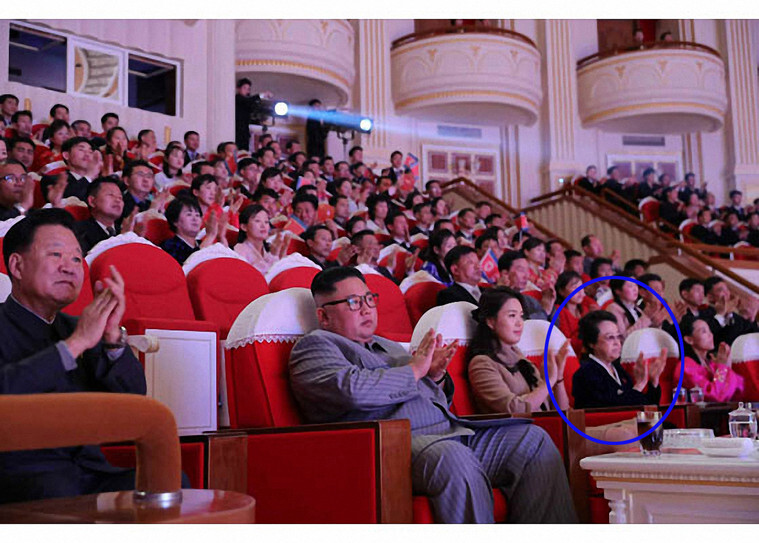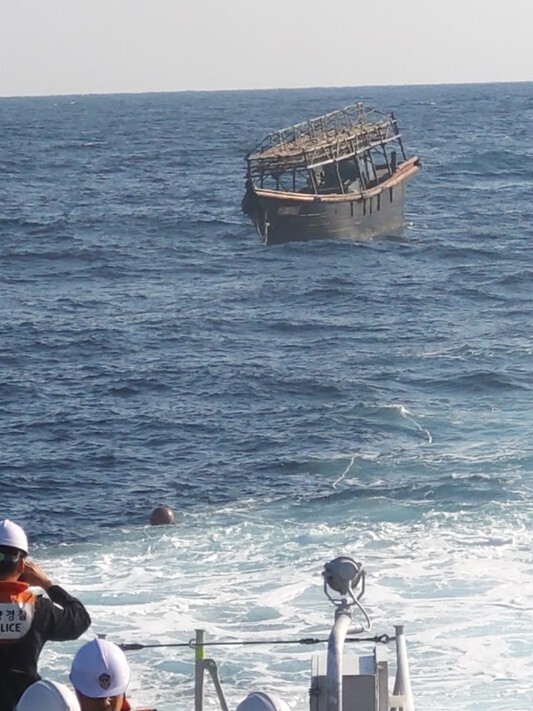hankyoreh
Links to other country sites 다른 나라 사이트 링크
[News analysis] The insidious threat of fake news surrounding North Korea

The recently disproven rumors of North Korean leader Kim Jong-un’s failing health and possible death are only the latest in a history of “fake news” about Pyongyang that has plagued inter-Korean relations for the past 70 years. The most famous example was a report on the front page of the Chosun Ilbo on Nov. 16, 1986, that claimed then leader Kim Il-sung had been shot. Two days later, Kim appeared at Sunan Airport in Pyongyang to deny the “fake news” reports in person.
Even when the scope is narrowed to Kim Jong-un’s leadership since 2012, South Korean and overseas media have routinely collaborated to produce reports claiming that people had been “slain” or “purged” when they were actually perfectly fine. There tends to be a flow to the production, transmission, and propagation of this sort of fake news. The first report generally cites an “internal North Korean source” whose identity cannot be confirmed. Often, this is spearheaded by domestic news outlets like the Chosun Ilbo -- but once the government or foreign news outlets like CNN become involved, the reports tend to take off like wildfire. The result is an endless feedback loop, where the claims of a “North Korean source (or defector)” are published in the domestic press and then the foreign press, then republished in the domestic press and echoed by the administration, politicians, and defectors in South Korea. Notably, retractions and apologies are rarely ever provided when the reports are shown to be false.

On May 31, 2019, the Chosun Ilbo published a front-page article stating that Kim Yong-chol had been “sentenced to hard labor” and that Kim Hyok-chol had been “shot.” The basis for the report were the claims of a single “North Korea source,” with no cross-checking. As vice chairman of the Workers’ Party of Korea (WPK), Kim Yong-chol was considered a “proxy” for Kim Jong-un who had contributed to the staging of three inter-Korean summits and two North Korea-US summits in 2018-219; the situation would have been serious indeed if the reports were true, and numerous news outlets published reports speculating that he had been “purged.”
Two days later on June 2, the groundlessness of the “hard labor” claims was indirectly proven when Kim was seen attending a performance of a “military family art team” with Kim Jong-un. On Aug. 29, 2013, the Chosun Ilbo reported that Kim Jong-un’s “former lover” Hyon Song-wol had been shot; she was confirmed to still be alive when she attended the 9th National Artists’ Congress on May 16, 2014.

CNN, which played a decisive role in propagating the recent rumors of Kim Jong-un’s ill health and possible death, also reported on May 15, 2015, that Kim’s aunt, former Light Industry Department Director Kim Kyong-hui, had been “fatally poisoned” in May 2014. Once again, the report was based on the claims of an unidentifiable “high-ranking defector.” It was amplified from there, with “special bulletins” from TV Chosun and Channel A. Kim Kyong-hui was confirmed to be alive on Jan. 25 of this year when she was in the audience with Kim Jong-un and his wife for a commemorate Lunar New Year performance -- four years and eight months after the CNN reports.
S. Korean government itself has been guilty of false reportsSometimes, the South Korean government itself has been the epicenter of false reports. Following its announcement of the Kaesong Industrial Complex’s full-scale shutdown on Feb. 10, 2016, the Park Geun-hye administration distributed documents that afternoon to the Ministry of Unification’s beat reporters stating that Korean People’s Army Chief of Staff Ri Yong-gil had been “executed.” Three months later, Ri was confirmed to still be alive when he was appointed to the Central Military Commission at the 7th WPK Congress on May 7-8. The Park administration’s actions in leaking unconfirmed rumors that the KPA chief of staff had been executed were more along the lines of an “operation” aimed at deflecting criticism over the Kaesong Complex shutdown decision that had been announced a few hours earlier.

Liberty Korea Post, a website headed by North Korean defector Lee Ae-ran, reported on Dec. 17, 2019, that two North Korean sailors who had been repatriated by the South Korean government on Nov. 7 after being accused of killing 16 fellow crew members on a squid boat were actually “defection brokers who had nothing to do with the murders.” Naturally, the report cited a “North Korean source.” The day after the report, the Liberty Korea Party (now the United Future Party) staged a press conference with defectors to harshly denounce the “murderous” South Korean administration. Liberty Korea Post eventually acknowledged that the report was mistaken with a “correction” published on Feb. 18.
There are a number of reasons why this sort of irresponsible fake news is so common with North Korea-related reporting. First, the difficulty or impossibility of directly conducting local coverage or speaking to officials in North Korea is abused as a “get out of jail” card. Second, irresponsible reporting is encouraged by the perception that news outlets are free from any sort of legal liability, such as having to correct or pay damages for false reporting. A third factor lies in the conscious and unconscious attitudes of contempt, hatred, and prejudice toward the North.
Rumors unnecessarily increase “Korea risk” in economyOver the past few years, absurd reports have been perpetuated by one-person or “alternative” news outlets, often based on YouTube or social media, which have taken advantage of deeply rooted anti-North Korean sentiments. While controversy was raging over the rumors of Kim Jong-un’s ill health and possible death, deliberated faked news was being produced and circulated widely, with Korean Central Television footage of Kim Jong-il’s funeral skillfully edited into a video that was presented as “Kim Jong-un’s funeral.” The situation has been made worse by defector groups aggressively proliferating claims from unverified “North Korean sources,” as if attempting to draw attention to themselves.
This type of fake news on North Korea can have serious consequences. With South Korea part of a divided nation and its economy largely dependent on trade, rumors of Kim Jong-un’s failing health or health can increase the “Korea risk” all by themselves, creating negative effects for the economy. Stock values fell by as much as 2.99 percentage points on the day of CNN’s report that Kim was in “critical condition,” while the exchange rate jumped by 9.2 won to the dollar -- examples of comparatively mild effects.
The rumors also create unnecessary confusion and costs by stirring up security concerns among South Koreans. And this is to say nothing of the increased difficulties they create for Seoul’s efforts to manage and improve inter-Korean relations as they trigger objections from Pyongyang.
By Lee Je-hun, senior staff writer
Please direct comments or questions to [english@hani.co.kr]

Editorial・opinion
![[Column] Season 2 of special prosecutor probe may be coming to Korea soon [Column] Season 2 of special prosecutor probe may be coming to Korea soon](https://flexible.img.hani.co.kr/flexible/normal/500/300/imgdb/original/2024/0426/3317141030699447.jpg) [Column] Season 2 of special prosecutor probe may be coming to Korea soon
[Column] Season 2 of special prosecutor probe may be coming to Korea soon![[Column] Park Geun-hye déjà vu in Yoon Suk-yeol [Column] Park Geun-hye déjà vu in Yoon Suk-yeol](https://flexible.img.hani.co.kr/flexible/normal/500/300/imgdb/original/2024/0424/651713945113788.jpg) [Column] Park Geun-hye déjà vu in Yoon Suk-yeol
[Column] Park Geun-hye déjà vu in Yoon Suk-yeol- [Editorial] New weight of N. Korea’s nuclear threats makes dialogue all the more urgent
- [Guest essay] The real reason Korea’s new right wants to dub Rhee a founding father
- [Column] ‘Choson’: Is it time we start referring to N. Korea in its own terms?
- [Editorial] Japan’s rewriting of history with Korea has gone too far
- [Column] The president’s questionable capacity for dialogue
- [Column] Are chaebol firms just pizza pies for families to divvy up as they please?
- [Column] Has Korea, too, crossed the Rubicon on China?
- [Correspondent’s column] In Japan’s alliance with US, echoes of its past alliances with UK
Most viewed articles
- 1No good, very bad game for Korea puts it out of Olympics for first time since 1988
- 2[Column] Season 2 of special prosecutor probe may be coming to Korea soon
- 3Korea’s 1.3% growth in Q1 signals ‘textbook’ return to growth, says government
- 4‘We must say no’: Seoul defense chief on Korean, USFK involvement in hypothetical Taiwan crisis
- 5Is N. Korea threatening to test nukes in response to possible new US-led sanctions body?
- 6Division commander ordered troops to enter raging flood waters before Marine died, survivor says
- 7[Column] ‘Choson’: Is it time we start referring to N. Korea in its own terms?
- 8Will NewJeans end up collateral damage in internal feud at K-pop juggernaut Hybe?
- 9Korea sees more deaths than births for 52nd consecutive month in February
- 10[Editorial] Korea’s surprise Q1 growth requires objective assessment, not blind fanfare